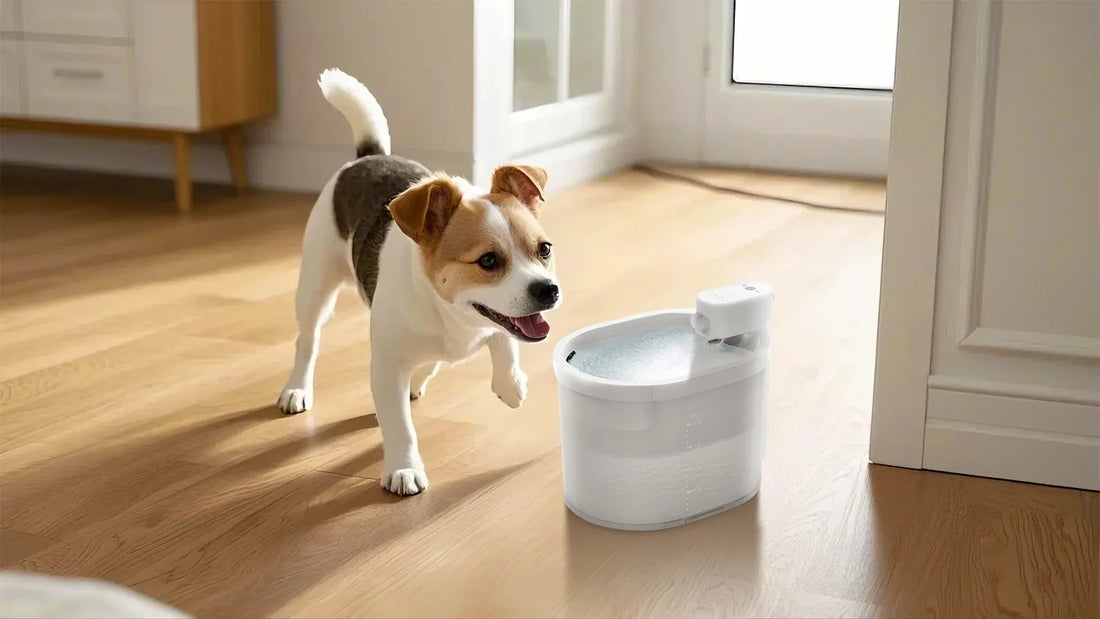If your cat water fountain stopped working, you're not alone. Many pet owners face this frustrating issue, but understanding the causes and solutions can help you get it back up and running quickly. A malfunctioning water fountain can leave your cat without access to fresh, flowing water, which is essential for their health and well-being. In this article, we'll explore the common reasons why cat water fountains stop working, provide step-by-step troubleshooting tips, and share preventive measures to ensure your pet always has access to clean water.
Common Reasons Why Cat Water Fountains Stop Working
There are several reasons why your cat water fountain might have stopped working. Identifying the root cause is the first step toward fixing the problem. Here are some of the most common issues:
1. Power Supply Issues
One of the most common reasons for a cat water fountain to stop working is a problem with the power supply. Ensure that the power cord is securely plugged into the outlet and that the outlet itself is functioning. Sometimes, a simple unplugging and replugging can resolve the issue.
2. Pump Malfunction
The pump is the heart of the water fountain, and if it malfunctions, the fountain will stop working. Over time, the pump can become clogged with debris or mineral deposits, leading to reduced performance or complete failure. Regular cleaning and maintenance can help prevent this issue.
3. Water Level Too Low
Most cat water fountains have a minimum water level requirement. If the water level drops below this threshold, the fountain may stop working. Always ensure that the water level is within the recommended range to keep the fountain functioning properly.
4. Clogged Filters
Filters play a crucial role in keeping the water clean and free from debris. However, if the filter becomes clogged, it can restrict water flow and cause the fountain to stop working. Regularly replacing or cleaning the filter can help maintain optimal performance.
5. Electrical Issues
Sometimes, the issue may be related to the electrical components of the fountain. Frayed wires, damaged cords, or faulty connections can all cause the fountain to stop working. Inspect the electrical components for any signs of damage and replace them if necessary.
Step-by-Step Troubleshooting Guide
If your cat water fountain has stopped working, follow these step-by-step troubleshooting tips to identify and fix the problem:
1. Check the Power Supply
Start by ensuring that the power cord is securely plugged into the outlet. Test the outlet with another device to confirm that it is functioning correctly. If the outlet is working, but the fountain still doesn't turn on, move on to the next step.
2. Inspect the Pump
Remove the pump from the fountain and inspect it for any visible signs of damage or clogging. Clean the pump thoroughly, removing any debris or mineral deposits. If the pump is damaged, consider replacing it with a new one.
3. Verify the Water Level
Check the water level in the fountain and ensure that it meets the minimum requirement. If the water level is too low, add more water and see if the fountain starts working again.
4. Clean or Replace the Filter
Remove the filter from the fountain and inspect it for clogs. If the filter is dirty or clogged, clean it according to the manufacturer's instructions or replace it with a new one. A clean filter will ensure proper water flow and prevent the fountain from stopping.
5. Examine the Electrical Components
Inspect the power cord and other electrical components for any signs of damage. If you notice frayed wires or damaged connections, replace the affected parts to restore functionality.
Preventive Measures to Keep Your Cat Water Fountain Working
Preventing your cat water fountain from stopping working is easier than dealing with a malfunction. Here are some preventive measures to keep your fountain in top condition:
1. Regular Cleaning
Regular cleaning is essential to prevent debris and mineral deposits from clogging the pump and filter. Follow the manufacturer's cleaning instructions and clean the fountain at least once a week.
2. Use Filtered Water
Using filtered water can help reduce the buildup of mineral deposits in the fountain. This will not only keep the fountain working smoothly but also provide cleaner water for your cat.
3. Replace Filters Regularly
Filters have a limited lifespan and need to be replaced regularly. Check the manufacturer's recommendations for filter replacement and stick to a schedule to ensure optimal performance.
4. Monitor the Water Level
Keep an eye on the water level in the fountain and refill it as needed. Maintaining the proper water level will prevent the fountain from stopping due to low water levels.
5. Inspect Electrical Components
Regularly inspect the power cord and other electrical components for any signs of wear or damage. Replace any damaged parts promptly to avoid electrical issues.
When to Replace Your Cat Water Fountain
While many issues can be resolved with troubleshooting and maintenance, there may come a time when it's best to replace your cat water fountain. If the fountain is old, frequently malfunctions, or is beyond repair, investing in a new one can provide your cat with a reliable source of fresh water. Look for a fountain that is easy to clean, has replaceable filters, and is made from durable materials.
Keeping your cat water fountain in good working condition is essential for your pet's health and happiness. By understanding the common reasons why fountains stop working, following troubleshooting tips, and implementing preventive measures, you can ensure that your cat always has access to clean, flowing water. Don't let a malfunctioning fountain leave your furry friend thirsty—take action today to keep it running smoothly!













